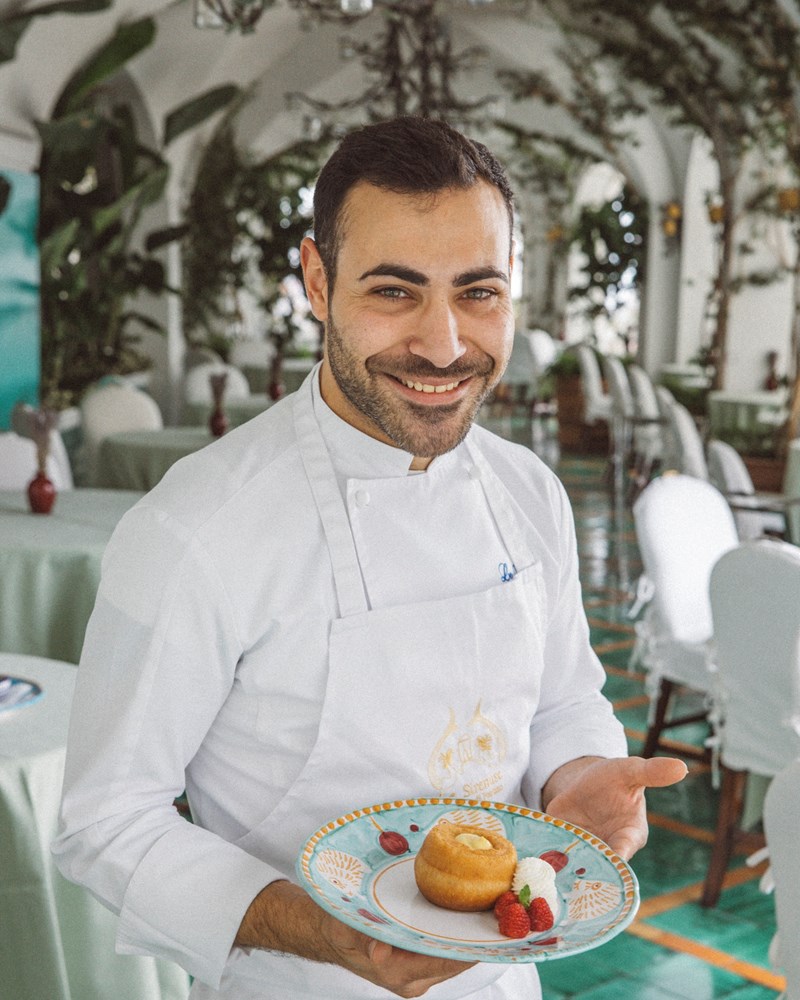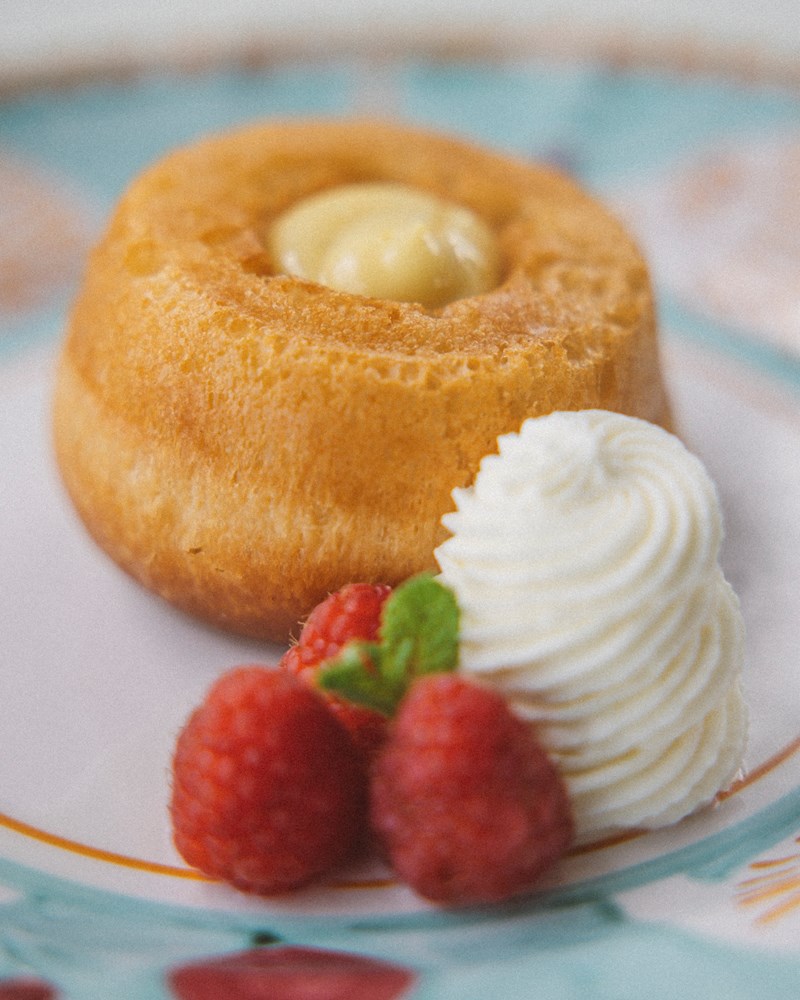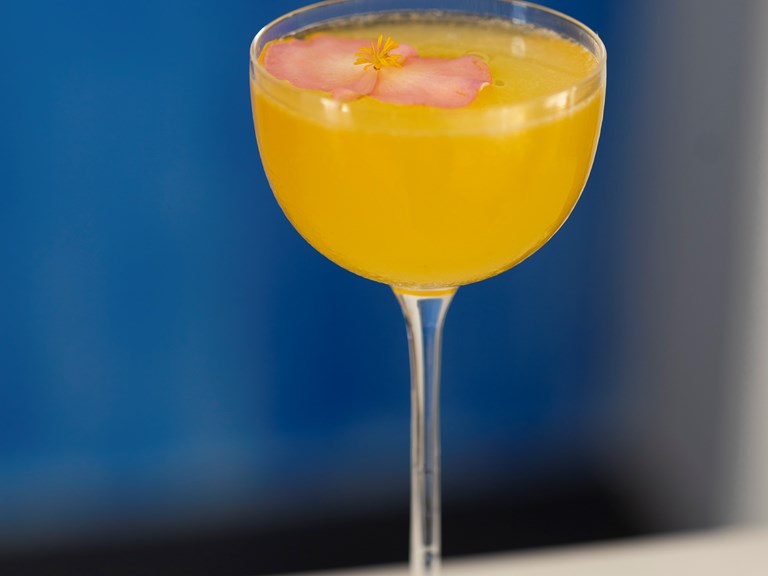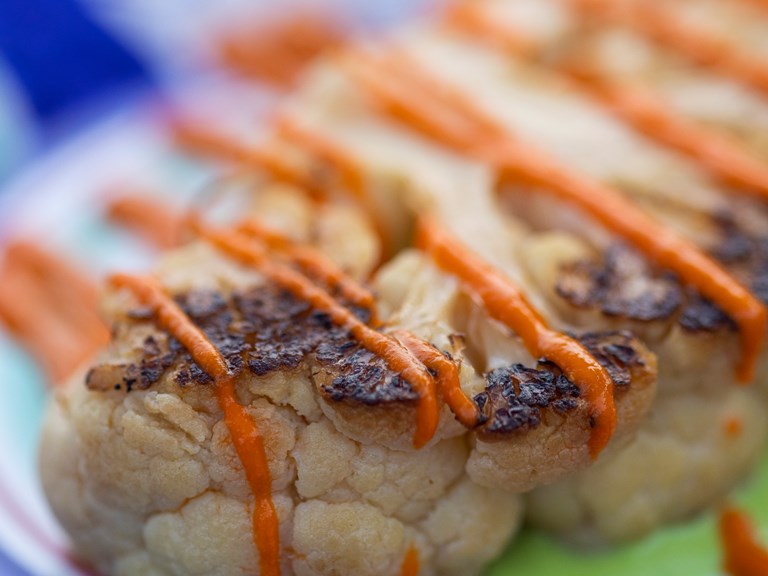THE DISH I COME HOME TO: FRANCESCO COZZOLINO, IL BABÀ NAPOLETANO
20.12.2023 RECIPES
Welcome to the first part of a new Sirenuse Journal series in which we ask some of the talented members of our brigata di cucina or kitchen brigade a simple question: if you had to name one piatto di cuore – literally your ‘dish of the heart’, a dish that you like to come home to both figuratively and literally – what would it be?

We begin with a festive treat from pastry chef Francesco Cozzolino, who has nominated that classic Neapolitan sweet, the babà. Like any self-respecting Neapolitan pastry, this airy sponge cake, which is traditionally served soaked in rum syrup, drags in its wake it an elaborate foundation legend. It all has to do with a deposed Polish king, Stanislaus I, who had a taste for rum and and a distaste for Gugelhupf or Kugelhopf, the bland sponge cake that was the speciality of Alsace, his place of exile for more than a decade. One day, the story goes, he got so angry when served yet another slice of Gugelhupf that he threw it at his butler; it missed, and landed in a glass of rum.
What is certain is that the babka, as it was known in Slavic languages, did indeed migrate, like Stanislaus, from Eastern Europe to France, sometime in the 18th century. Parisian patissier Nicolas Stohrer developed the classic French form of the ‘rum baba’, which back then contained candied fruit and was often served with a topping of whipped or Chantilly cream. When it was brought to Naples – which had strong links with Paris and the French court – the recipe evolved: out went the candied fruit, and in came the fungo or ‘mushroom’ shape, which distinguishes the babà napoletano from other varieties. Larger, ring-shaped babàs, baked in Bundt pans, are also sold in the city’s pasticcerias, but it’s the one-portion version – served up in little one-babà containers that ensure the sponge is constantly soaking in rum syrup – that is the genuine article. This can be either semplice – with no frills – or with extras like creme pat and amarena cherries.
“I don’t really have a sweet tooth” is pastry-chef Cozzolino’s surprising opening sally. “I prefer savoury dishes, and I could easily have nominated one of those as my piatto del cuore”. But he does have a deep connection with the babà, one that goes back to his childhood.
“When we were kids, we always used to go eat Sunday lunch with the nonni, my grandparents, in their house in Torre del Greco”, Cozzolino recounts. “Every Sunday my grandpa would go to the local pasticceria and come back with a big tray of pastries to be served after lunch. Rather than put them in the centre of the table and say ‘help yourself’, he would pick up the tray and go around the table asking us to choose – and he would always start with the youngest, then he’d skip to the oldest, and the last one to choose would always be my dad. And my dad would always have to eat the babà, because nobody else wanted it. So one day, I took the babà when it was my turn, so papa would get something else. Next Sunday, grandpa comes back from the pasticceria, and there are two babàs on the tray. ‘I saw that you like babà’, he told me, ‘so I got you an extra one’!”.
So great is the Neapolitan love of the babà (Francesco’s dad notwithstanding), that it has become a byword for something precious. In the dialect of Naples, “Tu si ‘nu babbà!” means “You’re an absolute treasure!”.
BABÀ NAPOLETANO
Ingredients for 20 babàs
400g strong white flour (e.g. Manitoba)
135g unsalted butter
6 eggs
70g white caster sugar
20g brewer’s yeast
a pinch of salt
For the rum syrup:
500ml water
250g sugar
80ml rum
some strips of peel from an untreated lemon

First, decide whether you want classic mushroom-shaped babàs or the Bundt-style donuts pictured here. For the former, you’ll need to procure classic aluminium babà molds, which look like little truncated conical tin cups. The ‘standard’ size is 4cm diameter at the base, 6cm at the top, and 6cm high. For the Bundt-style babà, look out for mini-Bundt molds or silicon trays with several in one tray.
Dissolve the brewer’s yeast in 2-3 tablespoonfuls of warm water. Cut the butter into cubes of around 1cm. Beat the eggs.
Put the flour, sugar and yeasty water into a food mixer or bread maker with a K-beater attachment. Start the mixer on its normal bread/pizza speed, and add the beaten eggs in three goes, with a minute or so between each. Finally, add the butter, then the salt, and continue mixing for around ten minutes until the sticky dough becomes semi-transparent when seen against the light.
Leave the dough to rise at 28°C for around four hours until it has quadrupled in size. At this point, transfer into the buttered metal or unbuttered silicon molds. You should fill each mold to around half of its capacity. Leave to rise again at 28°C until the dough has doubled in size, reaching the top of the mold (this should take around 40 minutes).
Place the molds in an oven at 200°C for around 8 minutes, then reduce to 180°C for another 5 minutes. Use your nose and eyes to guide you: a babà should be light gold in colour, a little darker on the crown. At the minimum sign of burning, remove.
Leave to cool, remove from molds, then leave to cool completely on a wire grate.
To make the rum syrup, heat the water, sugar and lemon peel together to around 60°C and stir until the sugar has dissolved. Turn off the heat, leave to cool and add the rum. Strain to remove the lemon peel (or simply fish out the strips of peel).
When the babàs have cooled and you’re ready to immerse them in the rum syrup, pour the latter into a bowl and arrange a few of the babàs inside so they are completely covered by the syrup (or if you prefer you can do one at a time). Leave them to soak up the syrup for five minutes or so, then arrange them in a container and cover with plastic wrap if you’re not going to serve them immediately. If you’ve made mushroom-shaped babàs, they should be stored with the bulbous end downwards.
Bundt-style babàs are generally served filled with crème pâtissière, crème Chantilly or whipped cream, and garnished with fruit of your choice.
Photos © Roberto Salomone
Le Sirenuse Newsletter
Stay up to date
Sign up to our newsletter for regular updates on Amalfi Coast stories, events, recipes and glorious sunsets

